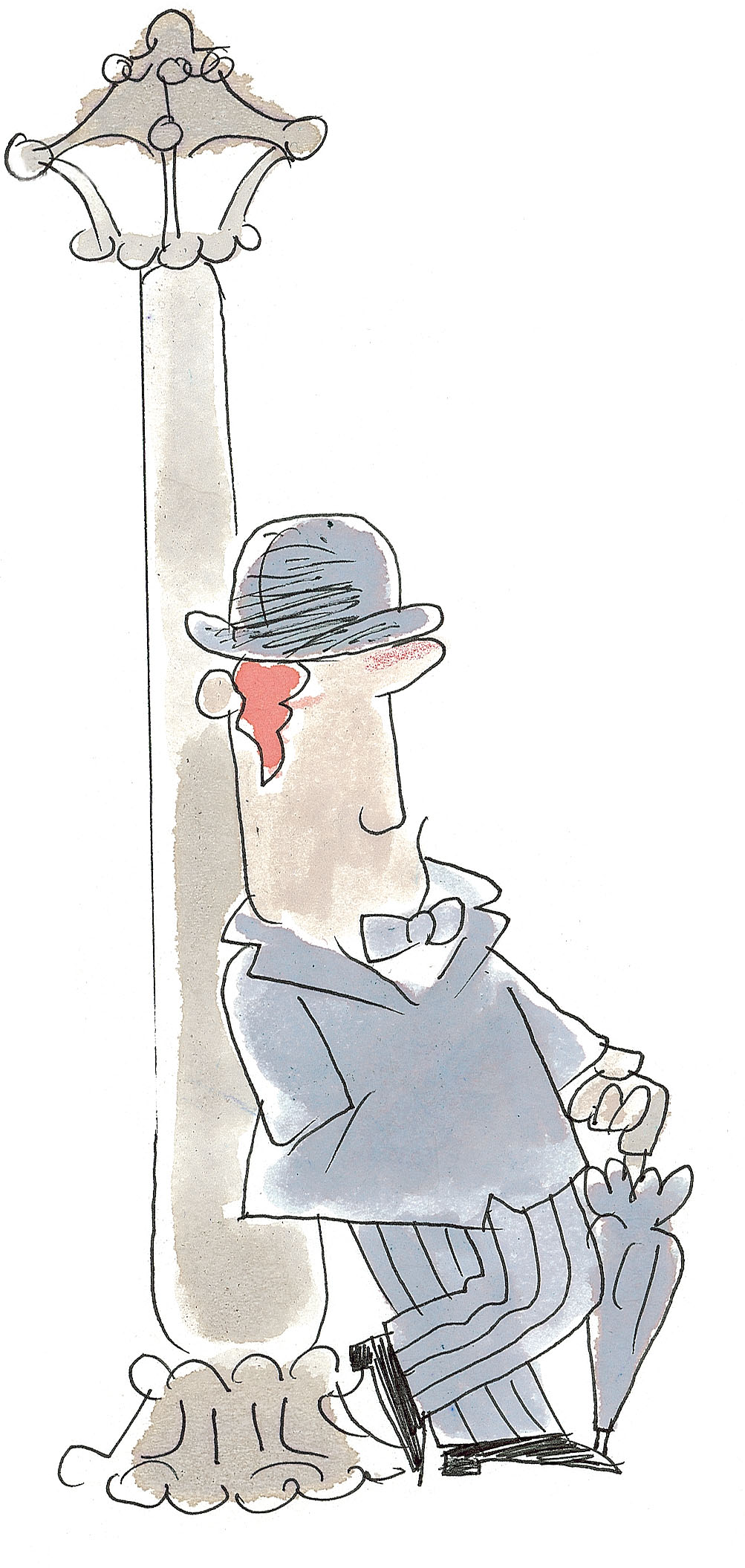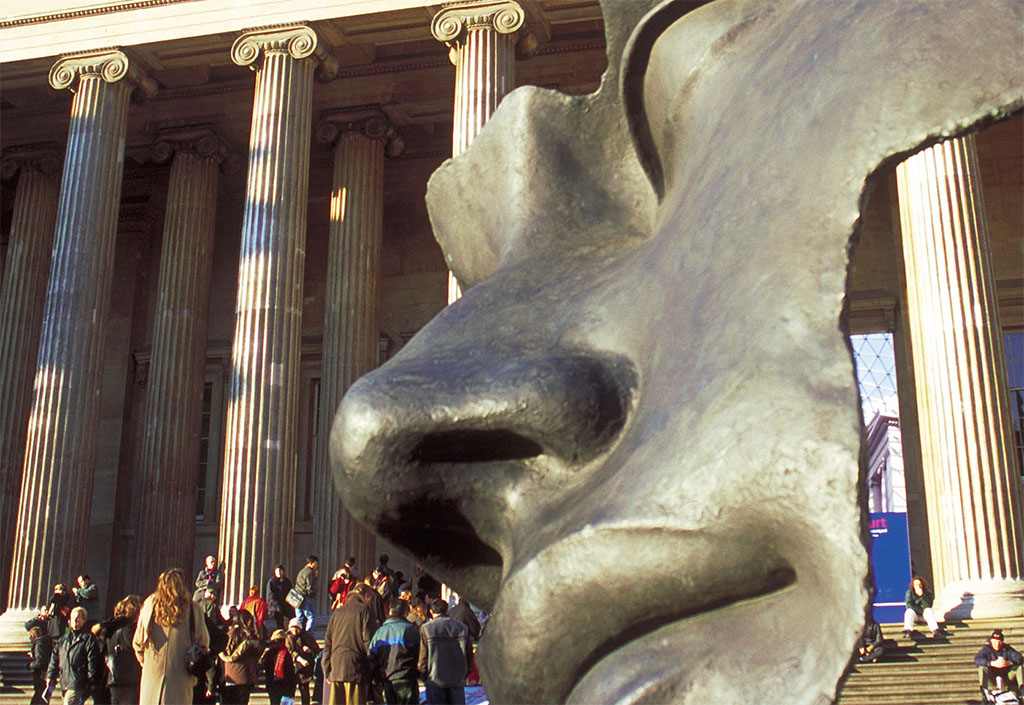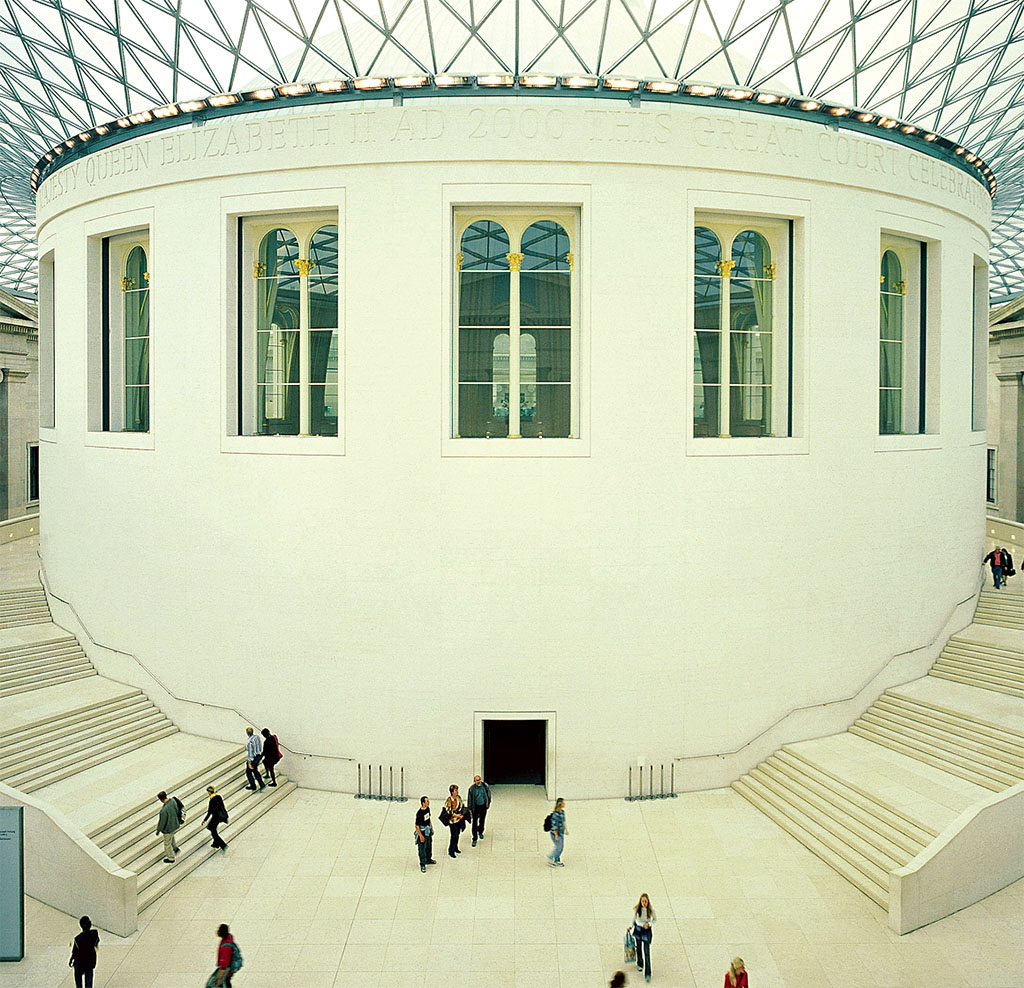
[caption id="StreetlightsofLondon_img1" align="aligncenter" width="1003"]

Bloomsbury: Bloomin’Again
LIKE MANY LONDON neighborhoods, Bloomsbury was once a prestigious address; after decades of neglect, it is being revived and restored to be one of the most vibrant gentrified neighborhoods in the metropolis. It is being promoted as a prime mixed-use area featuring cultural, commercial and residential quarters. Bloomsbury, which has been a synonym for “bohemianism” ever since the famous Bloomsbury Group called it home, is bounded by Euston Road, Gray’s Inn Road, High Holborn and Tottenham Court Road and is easily accessible by the Great Russell Street, Tottenham Court Road and High Holborn Underground stations.
[caption id="StreetlightsofLondon_img2" align="aligncenter" width="1024"]

WWW.BRITAINONVIEW.COM
Institutions in the neighborhood include the massive (British Museum) and the mini (the recently opened Cartoon Museum), the heart-wrenching (Foundling Museum) and the Hogarth-associated (St. George’s Church of Gin Lane fame). The University of London, the Royal Academy of Dramatic Art and the Great Ormond Street Hospital for Children are also features of Bloomsbury. About its famous squares, Bloomsbury, Bedford, Tavistock, Russell and Woburn, Virginia Woolf wrote, “Bloomsbury squares always intoxicate me with their beauty.” And so they still do for today’s visitors.
The building that anchors Bloomsbury in the minds of locals and visitors is the venerable British Museum, established in 1753 and opened in 1759. With its world-famous collections from Egypt, Greece, Rome and Asia, along with Medieval and Renaissance collections, the museum is a “physical encyclopedia,” says Deputy Museum Director Andrew Burnett. “The Museum’s principles and purpose have remained true to the original founders’ ideas of making the collection available ‘for the studious and curious.’”
With 10 million objects in the museum’s collections, “it takes some 900 staff to keep the institution running. We’re responsible for the stewardship of these artifacts, and we take this responsibility, which we’ve held in trust for 250 years, very seriously,” Burnett says about one of the greatest museums in the world.
Most visitors are familiar with the Museum’s massive, multipillared neo-Classical portico. This traditional entrance gives way to Queen Elizabeth II Great Court, creating an enormous public space, which replaces the British Library. Crowned by more than 1,600 glass and steel plates—each one unique in shape—the Great Court was opened in 2000 to kudos, for its innovative design, and controversy because it failed to provide much-needed exhibition space.
Statues, information areas, bookshops and cafes are all part of the new entrance. With the construction of the Great Court, the centuries-old British Library was relocated to its own building near St. Pancras. The Great Court’s modernity complements the Enlightenment Gallery, just off to the right, which opened in 2003, the 250th anniversary of the museum. Originally the space, some 300 feet long featuring oak and mahogany flooring, and capitals, pilaster and architraves of marble, was called The King’s Library, in honor of George IV’s donation of his father’s 60,000-volume library.
The exhibition highlight of 2007-08 titled “First Emperor: China’s Terracotta Army” features a number of the famous statues found in 1974. Between September 13, 2007, and April 6, 2008, China has agreed to loan a dozen complete warriors and other recently excavated figures for display.
The mammoth British Museum is situated on Great Russell Street; just steps away on Little Russell Street is the minuscule in scale, but grand in ambition, Cartoon Museum, opened six months ago by HRH Prince Philip. Not unexpectedly, the sound of chuckles and outright guffaws are heard throughout the exhibition space as visitors sample the works of cartoonists ranging from James Gillray to David Low, from William Hogarth to Bruce Bairnsfather and Reg Smythe.
Seated in front of some of the 4,000 books and comics available to researchers, Curator Anita O’Brien points out that the Cartoon Trust was set up by artists, families of artists, and collectors in 1988 with the “aim to found a museum to promote and preserve the art of cartooning and caricature. We’re still battling the conception that people take this art form for granted, which is why it took so long to realize the Museum.”
In the gallery areas on the ground and first floors, visitors can view a cartoon timeline going back to 1700. Not all of the 1,400 works in the collection are on view, “because of the nature of the works—everything is on paper and fades and needs constant conservation,” points out O’Brien. “There will always be examples of artists who represent a particular period and style. Our galleries are never static, and repeat visitors know they will always have the opportunity to see something different.”
Even an American is represented in the collection. Chester Gould, creator of Dick Tracy, takes his place alongside Cyril Kenneth Bird, caricaturist and editor of Punch, the only cartoonist to hold that position. Reg Smyth’s Andy Capp, with cigarette dangling from his lips, faces off his house-coated wife in cardboard cutouts at the top of the stairs.
Obviously, laughter is a serious matter at the Cartoon Museum. At the nearby Cartoon Gallery, original cartoons by many of those represented in the museum’s collection are for sale.
[caption id="StreetlightsofLondon_img3" align="aligncenter" width="1024"]

BRITAINONVIEW/DAMIR FABIJANE
A brisk walk takes visitors from laughter to tears. The Foundling Museum, facing Brunswick Square, “tells an incredibly good story and tugs at everybody’s heartstrings,” observes Museum Director Rhian Harris. “Sea captain Thomas Coram, composer George Frideric Handel, and painter William Hogarth were the unlikely but enlightened trio who formed the Foundling Hospital, the first of its kind in Britain. This group of extraordinary people happened to come together in this one enterprise,” explains Harris.
Coram had been appalled at the plight of abandoned and illegitimate children under a year old in England. After years of badgering his sovereign, George II, he was granted a charter to establish a hospital for the care of the foundlings. The institution, which opened in 1739, was built on what is now the edge of Bloomsbury and remained there until the 1920s when the charity moved out of London. It repurchased 2½ acres of land in Bloomsbury for a children’s center and headquarters in London in 1937.
The museum opened in June 2004 in the refurbished building that had been built in 1937 as the hospital’s London headquarters. Not only does the museum contain the social history and memorabilia of the Foundling Hospital, but it also contains what is considered to be the first public art gallery in Britain, with some of the greatest paintings by one of its first governors, William Hogarth; his painting of Coram is one of the core works in the gallery. Hogarth’s contemporaries, Reynolds and Gainsborough, contributed works, and today there are about 100 paintings in the galleries.
But it is the personal artifacts—the tokens that mothers left as identification of their babies, the photographs of the youngsters, uniforms and the handwritten records—from the earliest days that engage the visitors, young and old.
“What’s truly amazing is that everything, everything,” repeats Harris, “was recorded. There was a general register noting names, dates, everything that could help track the baby. The mother was even given a receipt.” Harris shudders at the thought. “It would, of course, have been the most precious thing the mother could have.”
Across the road from the museum is, appropriately, one of the most famous of all playgrounds: Coram’s Fields. Here adults are not allowed in—unless accompanied by a child.
One of the most famous architecturally historic buildings in the area is St. George’s Church, designed by Nicholas Hawksmoor in 1731. Located between Museum Street and Bury Place, the church is visible in William Hogarth’s famous engraving of Gin Lane.
The church has been recently restored from the crypt to its unique stair-stepped tower. The World Monuments Fund in Britain, which had named it as an “endangered site,” the Paul Mellon Fund and the Heritage Lottery Fund financed the nearly £9 million repair. English Heritage had also listed the church, a Grade I property, on its Buildings at Risk register recently.
One of the most unusual aspects of the restoration is its reorientation back to its original east-west alignment. In 1780 it had been given an about-face to a north-south one to accommodate the growing congregation. “Obviously, there was an interest on the part of Heritage architects about the project,” says the Rev. Perry Butler.
The Rev. Butler confirms that even in the 10 years he has been associated with the church, he has seen the area “become more prosperous, smartened up in many respects. And over the next decade we will see further gentrification.”
Along with the squares and museums, Bloomsbury is bursting with hotels, B&Bs, pubs, quaint streets and independent bookshops. Reminiscing in his 1927 autobiography, Up From Bloomsbury, actor George Arliss wrote: “If anyone can tell me of a more highly respectable neighborhood than Bloomsbury…I…defy anyone to produce it.” He would agree if he visited Bloomsbury today.





Comments